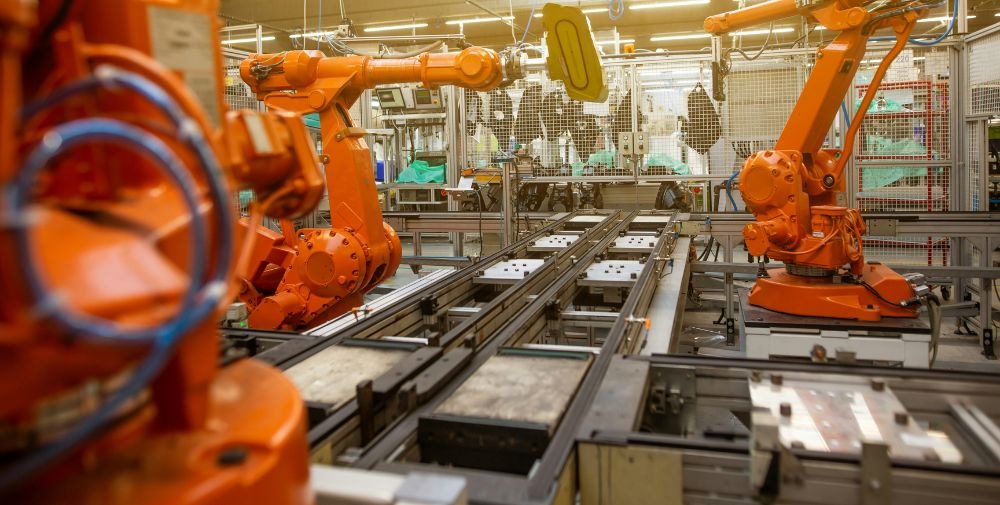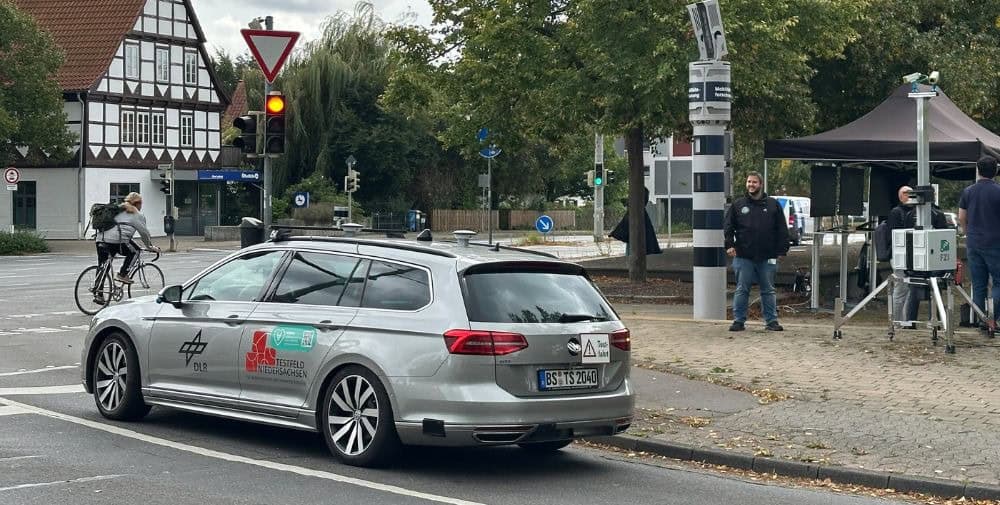The origin of the word robot is not too far from Saxony. Just a proverbial stone’s throw from the Czech border, the writer Josef Čapek used the term for the first time in 1920. Derived from the Czech “robota” (for hard labor or forced labor), the first artificial creatures appeared under this name in one of his works. The hour of birth of seemingly humanoid machines that put their abilities at the service of humans had arrived. To this day, when people think of robots, they usually think of human-like constructs. However, robotics has long since produced a wide variety of “flowers” – from industrial robots (first developed and patented in 1954), which often only resemble artificial gripper arms, to drones in the form of flying machines, vehicles or insects (spiders, beetles, etc.).
Germany is lagging behind in the global robotics scene
More than 550,000 robots were newly produced and installed worldwide in 2023. However, only around 26,000 of them in Germany. Although the number of robots installed annually in Germany has increased by 10,000 since 2012, Germany still only plays an outsider role in an international comparison. For comparison: in China, the largest robotics market in the world, 290,258 new robots were installed in 2022 alone. Japan is already in second place, lagging behind with 50,000 sold and deployed in the same year. Nowadays, robots can make work considerably easier and increase efficiency in almost all industrial and economic sectors – whether in production, medicine, mobility, logistics, etc. All too often, however, there is a lack of acceptance and trust in this still relatively “young” technology. Although the fear of being replaced by robots in the pre-corona years (around 2019) has increasingly given way – it is now being replaced by a certain skepticism towards artificial intelligence – the transfer from development to the market is still faltering, especially in Europe.
Saxony has held a special position in automation since 1990
Robots have long been able to close the skills gaps that cannot be filled by immigration or increased training and further education. Examples such as the semiconductor industry in Saxony, with its highly and partially fully automated plants, ultimately show what is technologically possible. Entire production processes now function here without human intervention. It is therefore hardly surprising that Saxony’s automation and robotics sector is also excellently positioned in the semiconductor industry. Companies such as HAP and Roth & Rau – Ortner, now Fabmatics, have been shaping the Saxon automation and robotics market since 1990. With their help, the Siemens plant, now Infineon, was first partially and finally fully automated. With their HERO and SCOUT products, the first rail-bound and self-propelled robotics solutions were even added from 2010. In cooperation with automation specialists such as SYSTEMA, Kontron AIS and Xenon, Saxony’s semiconductor factories were continuously expanded and developed. New players such as Wandelbots and Waku Robotics have been established in the Free State over the past few years, giving Saxony’s development into one of the leading robotics locations a further boost.
The Robot Valley connects around 400 robotics players
Since 2015, the Robot Valley network has also been connecting local robotics companies and suppliers in close cooperation with Silicon Saxony. With around 30 start-ups, over 340 companies and 44 research institutions, the Free State is now excellently positioned in terms of robotics. Well-known manufacturers such as Fabmatics and KUKA are active in the region. New courses of study, such as the Applied Robotics course of study supported by Silicon Saxony members at the Dresden University of Applied Sciences (HTW) and the robotics competence center there are expanding the training and further education opportunities. Research into the interaction between humans and robots in an industrial environment is also being carried out at TU Dresden. In-house competitions such as the KUKA Innovation Award 2025 are becoming increasingly popular. Events such as the “3rd Lusatia Conference: Opportunities for the robotics of the future”, meet-ups on AI and robotics or the HIGHTECH VENTURE DAYS reliably attract audiences to the “Leipzig – Chemnitz – Dresden” metropolitan region. Last but not least, projects such as CeTI or “Financial Robotics meets Ostsächsische Sparkasse” are constantly working on new solutions and products for a wide variety of target markets.
Silicon Saxony continues to develop into a robotics playground
And the use of robots is also on the rise in Saxony. Automated driving is being tested in designated areas of the Free State, e.g. in Dresden or in Lusatia. With the Research Field Lusatia, for example, a new test field for the interaction of various robots and drones in the air, on the road, rail and water is being built here, which will also be accessible for industrial use cases. From the use of modern drone solutions (e.g. in the field of accident research), to ever new automation solutions in production (e.g. the region’s semiconductor plants) and entire marketplaces for robots (e.g. Lots of Bots from Waku Robotics), robotics solutions have been changing Saxony as a business and science location for years. The Silicon Saxony network is also following this development with keen interest and offers a wide range of networking and exchange platforms – from its working group “Advanced Automation and Robotics” to its flagship event, the Silicon Saxony Day. The competence atlas “Robotics in Saxony” shows the services and solutions in this field that are already available in Saxony today. It is therefore worthwhile not to look too far afield when searching for suitable robotics solutions, but to look for suitable partners and solutions in the region. There is more and more machine movement in Robot Valley and with it new skills, new players and new solutions.



